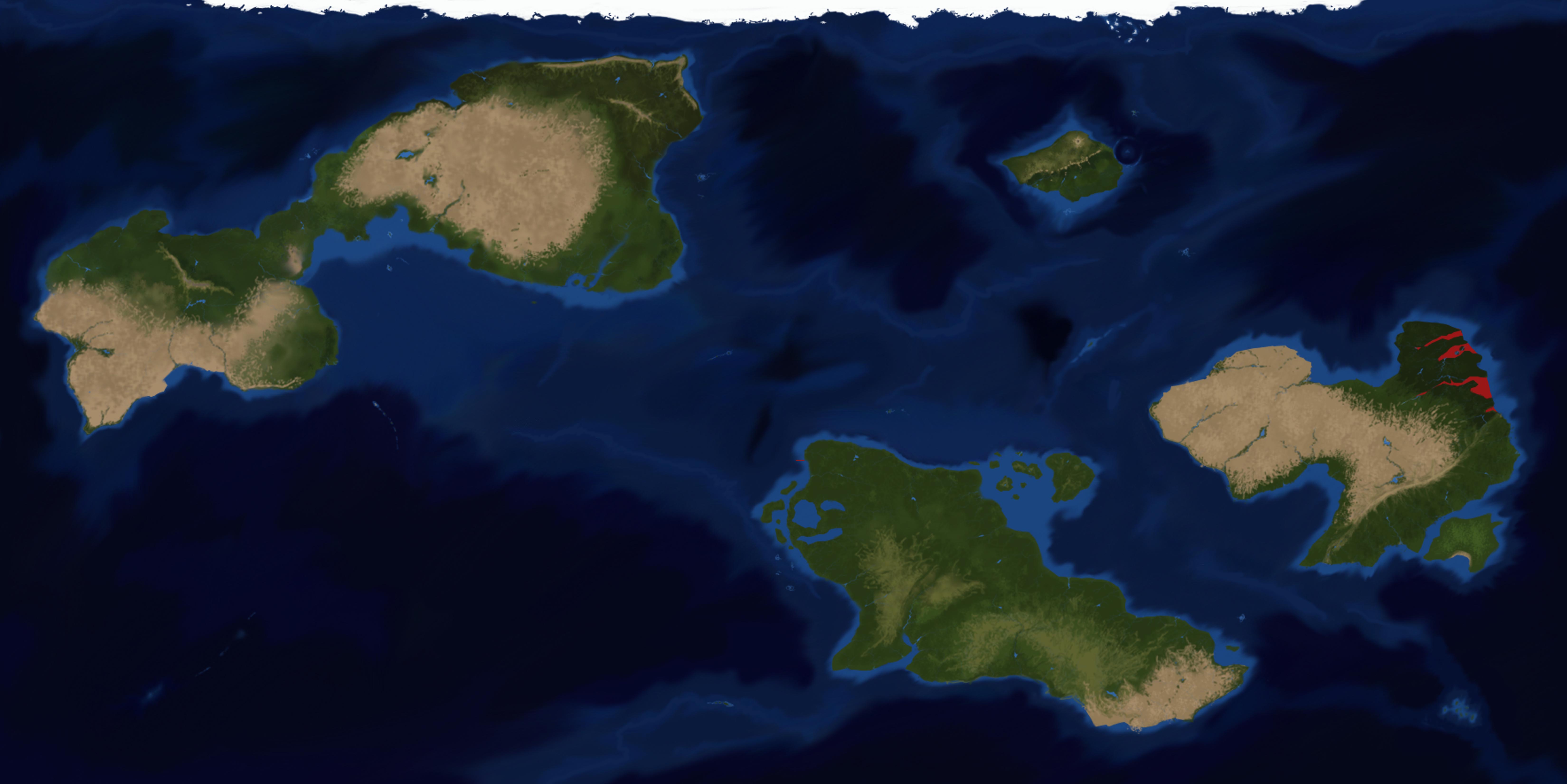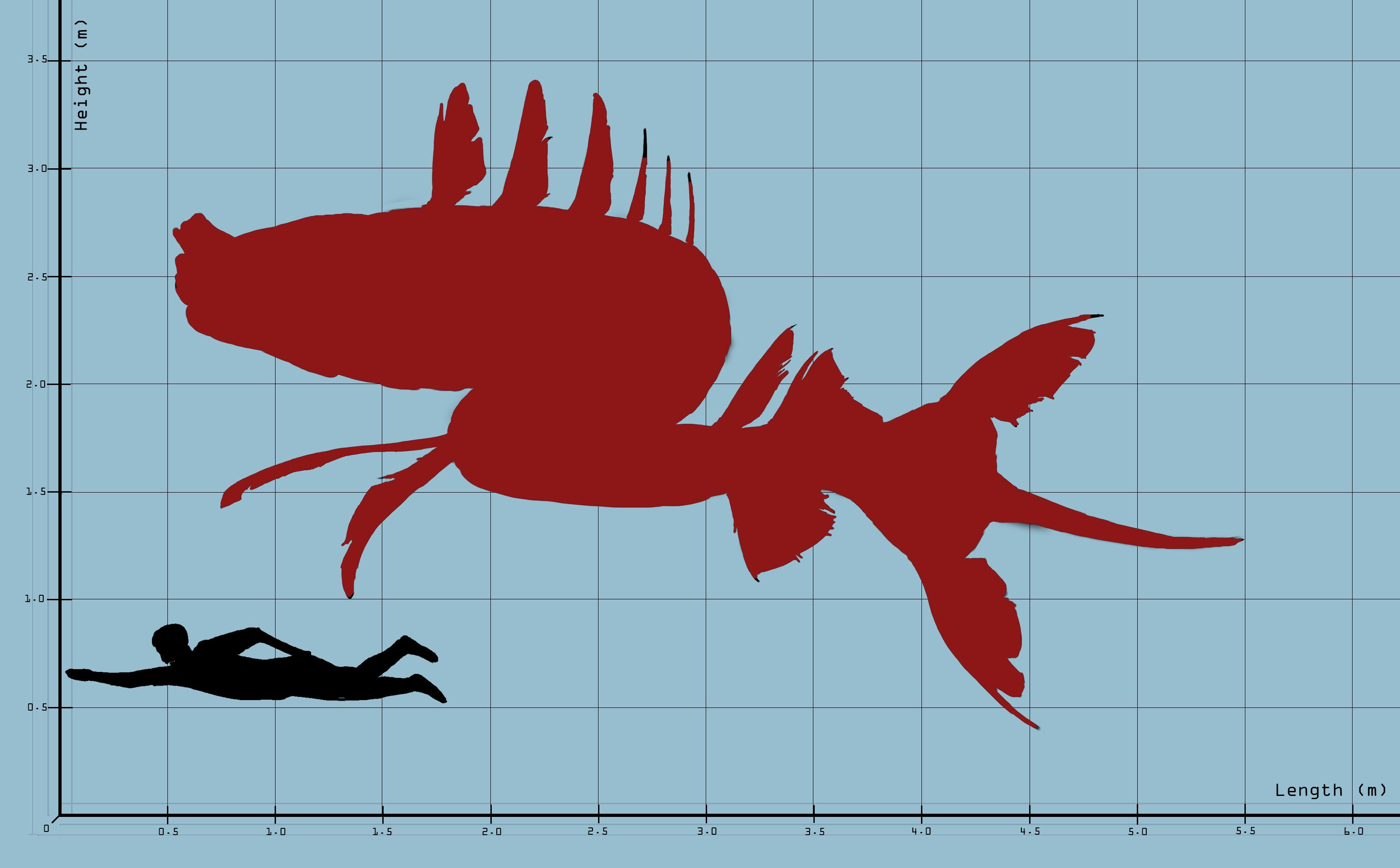Freshwater Shamiiz
Xenomuraena aequus is a fierce predator that inhabits the Najetee’s marshlands and rivers.
It’s a highly specialized predator that relies heavily on its camouflaging skills in order to stay unseen to unsuspecting prey.
Its skin color changes depending on the area it lives in, giving birth to many species of different sizes; X. aequus is the largest species of Xenomuraena currently discovered.
X. aequus is an ambush predator and rarely moves if not for stalking prey or fend off rivals from its territories.
As an ambush predator, X. aequus is an excellent sprinter, capable of bursts powerful enough to even propel it on the ground, giving a perfect opportunity for X. aequus to grab various land animals to their death.
Being able to better breathe and move outside of water, this animal can slither away from trouble on land and even consume prey in a place where some bigger predators or rivals can't find it.
X. aequus is able to “see” thanks to the specialized sensory organs inside the frontal horns which are able to perceive even the slightest movement thanks to electrical currents they release in the water; this gives the animal full awerness of what is surrounding it at all times, even on land.
X. aequus’s species name derives from it’s apparently calm attitude when hunting or basking in the sun, outside of water.
Basic Information
Anatomy
- Head Heavy with powerful jaw muscles and no eyes; two frontal horns used for echolocation.
- Teeth very large and recurved.
- Body elongated with no clear distinction between the end of the thorax and the start of the Gill Tail.
- Gill fan of large size and with very high ridges; Actual tail terminating after the end of the caudal drop.
- Ray finned; Six dorsal fins on the first half of the back, one last pair of dorsals on the end of the tail, near the beggining of the Gill fan.
- Anal I and II very large, a third single anal fin right before the start of the Gill fan.
- Moderately sized caudal fins developing from the top of the Gill fan.
Genetics and Reproduction
Xenomuraena aequus enter heat at the start of summer and at the start of winter.
Not much is known on the mating behavior of this animal outside of the fact that the egg deposition happens on land, with the female laying one to two eggs.
The eggs themselves are of similar shape and color to a rotting branch, making them camouflage better on the shore of the waterways they inhabit.
The eggs seem to take from twenty to thirty days to hatch and apparently the parents don't nurse them for long if at all.
Growth Rate & Stages
Ontogenesis radical from young to adult.
Young members of the species are born with extremely oversized anal fins terminating in small claws; they use these appendages to better move on land.
Newborns lack the frontal horns, poaaibly meaning they pass the first period of their life completely blind.
The youngs lose the natal aculeus sometime after submerging for the first time.
Ecology and Habitats
They are freshwater dwellers of Najeete's marshes, from the Littoral to the Medium Depth zone.
They like warm and murky waters where they can hide better from prey and plenty of muddy shores to rest on for hours.
Dietary Needs and Habits
Xenomuraena aequus is an excellent ambush predator, waiting for days in the murky waters of its habitat for prey to pass by.
They are also able to sprint at high enough velocity as to propel itself on land, grabbing any amphibian going for a drink in the area.
Biological Cycle
Not much is known.
Captured specimens from one to three years have all been discovered being still sexually immature; a very old specimen, around fiftyfive to sixty years old was still fertile.
Additional Information
Social Structure
On the shores they bask in small groups; underwater they are territorial animals, not tolerating any conspecifics.
Domestication
Visible in a couple of public aquariums as a main attraction.
Recently held in captivity in some research centers to try to study its behavior a bit more without the need to enter the marshes.
Uses, Products & Exploitation
None
Perception and Sensory Capabilities
Bases its perception of the world on echolocation.
Symbiotic and Parasitic organisms
None known.
Genetic Descendants
Scientific Name
Eumuraenia; Radiopinniserpentoidea; Xenomuraenidae ; Xenomuraena; X. aequus
Lifespan
60 years (oldest recorded specimen to date)
Conservation Status
DATA DEFICENT: Due to how difficult it is to traverse the Najeete's marshlands, no official large scale expedition can be made to properly assess this animal's populations.
Population trend: UNKNOWN
Average Weight
100 to 400 kg
Body Tint, Colouring and Marking
Muddy green body color with brown countershading.
Bright green fins.
Remove these ads. Join the Worldbuilders Guild












Comments